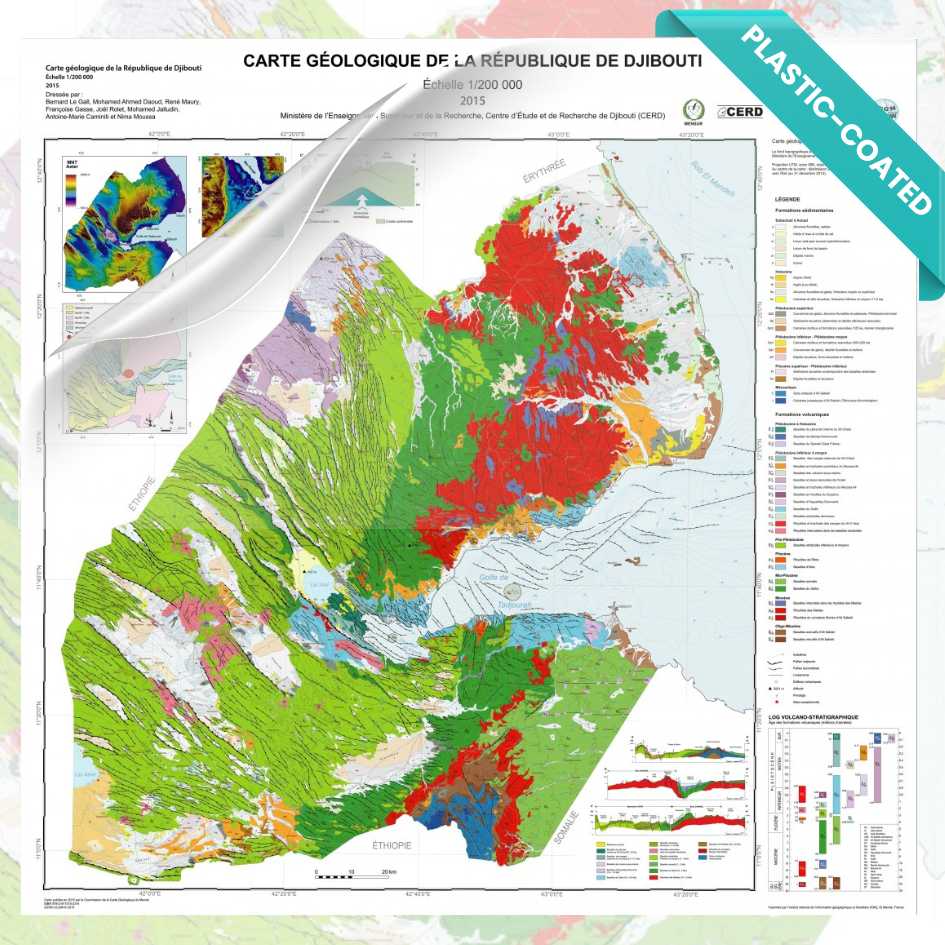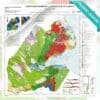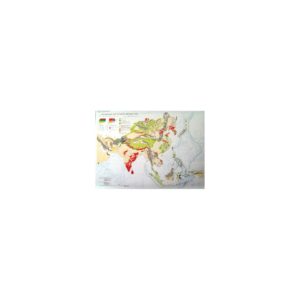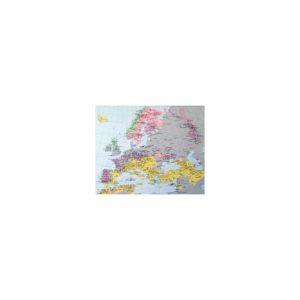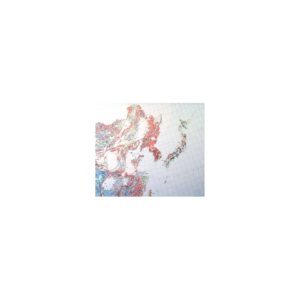As part of our commitment to the environment, we are in the process of switching to a more environmentally-friendly hosting provider. The site is currently being prepared for this transition.
Orders are temporarily suspended while the migration is finalised.
Thank you for your patience and support.
We look forward to seeing you soon with an even more ethical and efficient site!
Geological map of the Republic of Djibouti - laminated
32,00 €
Geological map of the Republic of Djibouti - laminated
1st edition
Projection: UTM, zone 38N, datum WGS 84
Scale: 1/200 000
Authors: Bernard Le Gall, Mohamed Ahmed Daoud, René Maury, Françoise Gasse, Joël Rolet, Mohamed Jalludin, Antoine-Marie Caminiti, Nima Moussa
Centre d'Etude et de Recherche de Djibouti (CERD) and CCGM 2015
Geological map of the Republic of Djibouti - laminated
Description
Geological map of the Republic of Djibouti - laminated
Despite its modest size, close to that of Brittany, the Republic of Djibouti has the privilege of hosting one of the world's most emblematic geological sites - the Asal Rift. The Asal Rift, with its basaltic lava slopes cut into strips by networks of faults, has a floor 150 m below Ghoubbet sea level. It is the result of a stretching and thinning of the continental lithosphere, in front of the Aden oceanic rift separating the Arabian and Somali plates.
These first-order geodynamic processes, close to the stage of continental tearing, are exceptionally exposed in Djibouti, but, paradoxically, no cartographic document has yet given an account of their regional geological context. This gap has now been filled by the Geological map of the Republic of Djibouti at a scale of 1:200 000 (edited by the Commission of the Geological Map of the World) established between 2011 and 2015 under the coordination of Bernard Le Gall (UMR/CNRS 6538) and in close collaboration between scientists from the 'Domaines Océaniques' laboratory in Brest (René Maury and Joël Rolet) and the CERD in Djibouti.
The Geological Map of the Republic of Djibouti is a synthesis of ten existing 1:100,000 maps, combined with newly acquired data from the field and satellite imagery, this original document highlights the main components of the Afar system in Djibouti, namely
- the preponderance of synrift volcanism, whose basic and acidic lavas, emitted since about 30 million years ago (Ma) in the context of the Afar mantle plume, cover more than 70 % of Djibouti's territory.
- the importance of very young (< 3 Ma) fault networks, markers of crustal extension and responsible for a morphology of tilted blocks and large subsiding troughs, such as that of Asal.
- the heterogeneity of sedimentary deposits, whether of continental origin, such as the terrigenous filling of ditches, or marine, such as the evaporites of Asal and the reef limestones bordering the Gulf of Tadjourah.
- the existence of ante-rift bedrock represented by the Mesozoic sandstones and limestones of the Ali Sabieh sector. Their antiform structure is attributed to the intrusion of a laccolith at the early stage of rifting.
- The marine geology of Ghoubbet, the Gulf of Tadjourah and the approaches to Bab el Mandeb incorporates the fault networks and submarine volcanoes identified on the available bathymetric records.
Geological map of the Republic of Djibouti - laminated
Informations complémentaires
| Weight | 0,22 kg |
|---|---|
| Packaging | Tube (e.g. rolled card), Envelope (e.g. folded card or booklet) |
| Length | |
| Width | |
| Weight | |
| Scale |

